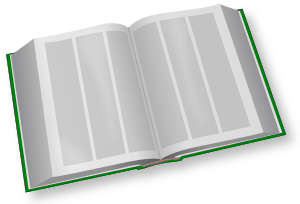

Typically when we talk about evaluation, we are using the CRAP test. This can still be a helpful process, but it doesn't quite fit as well with media sources as it does with text ones. Since there are other considerations fo


Visual Literacy
"Visual literacy skills equip a learner to understand and analyze the contextual, cultural, ethical, aesthetic, intellectual, and technical components involved in the production and use of visual materials. A visually literate individual is both a critical consumer of visual media and a competent contributor to a body of shared knowledge and culture." ACRL Visual Literacy Competency Standards for Higher Education
 VIEWER PERSPECTIVE
VIEWER PERSPECTIVE
VISUAL/AUDIO ELEMENTS
SOURCE OF MEDIA

CONTEXTUAL INFORMATION
Gathered through your observations, the information provided with the file, and through additional research:
“Open Educational Resources are teaching, learning, and research resources released under an open license that permits their free use and repurposing by others. OER can be full courses, course materials, lesson plans, open textbooks, learning objects, videos, games, tests, software, or any other tool, material, or technique that supports access to knowledge.”
-SPARC Definition of Open Educational Resources
Two Reasons: Cost and Restrictiveness of Traditional Resources
This material was created by David Wiley and published freely under a Creative Commons Attribution 4.0 license at: http://opencontent.org/blog/archives/3883
This framework is intended to act as a tool to guide your evaluation of Open Educational Resources for adaption into coursework. Due to the inherently open and digital nature of OERs it is critical to not only evaluate the content of the resource itself, but also the context and medium in which it was created and will be used. Criteria is suggested for evaluation of OERs in regard to content, context and medium.
Criteria were adapted from a similar evaluative framework found at: open.BCcampus.ca licensed under a Creative Commons Attribution 4.0 International License.
"Evaluating the Text Itself"
Clarity
The text is written in lucid, accessible prose, and provides adequate context for any jargon/technical terminology used
Comprehensiveness
The text covers all areas and ideas of the subject appropriately and provides an effective index and/or glossary
Content Accuracy
Content is accurate, error-free and unbiased
Consistency
The text is internally consistent in terms of terminology and framework
Grammar
The text contains no grammatical errors
Organization
The topics in the text are presented in a logical, clear fashion
"Evaluating the Context of Authorship vs. the Context of Use by Students"
Course Relevance
The content of the text is appropriately suited to the level of your students and learning outcomes of the course.
Cultural Relevance
The text is not culturally insensitive or offensive in any way. It should make use of examples that are inclusive of a variety of races, ethnicities, and backgrounds.
Content of the text should be appropriate to the students utilizing it. There could be dissonance between the cultural relevance to the author and to your students.
"Evaluating the Digital Medium of Deliverability"
Interface
The text is free of significant interface issues, including navigation problems, distortion of images/charts, and any other display features that may distract or confuse the reader. The interface is user-friendly and adequate to an extent that learning the technology will not subsume engaging with the content.
Further consideration could include: Multimedia Features and Canvas Integration.
Modularity/Organization
The text is readily divisible into smaller reading sections that can be utilized at different points during a course. Persistent navigation should facilitate the realignment and reorganization of the text to to be used at different points during the course.
“Shareability” and "Remixability"
The resource should be openly licensed in order to facilitate broad and free redistribution of the text.
The resource should be able to be remixed to more adequately suit the needs of your course if content and/or context are less than adequate.
Many resources offer platforms that enable you to easily remix and create OER content. For more information, please see: OER @ Butler University.
Stability
The platform the content is hosted on is stable and students will not lose access at any point during the course.
"Metaliteracy and Digital Resource Evaluation"
The prevalent availability of digital materials provides educators with an opportunity to engage students in the classroom with a multitude of non-traditional learning resources that are available at little to no cost to the student or educator. Conversely, this overwhelming availability of resources presents a new set of challenges for educators as the evaluation, integration, and utilization of these resources requires a pluralistic set of established and emergent literacies- i.e. Metaliteracy.
This new set of literacies reflect the need to evaluate resources in regard to the immersive participatory online environment of the 21st century educator and student.
Library Hours
Study Rooms
My Library Account
Library Website